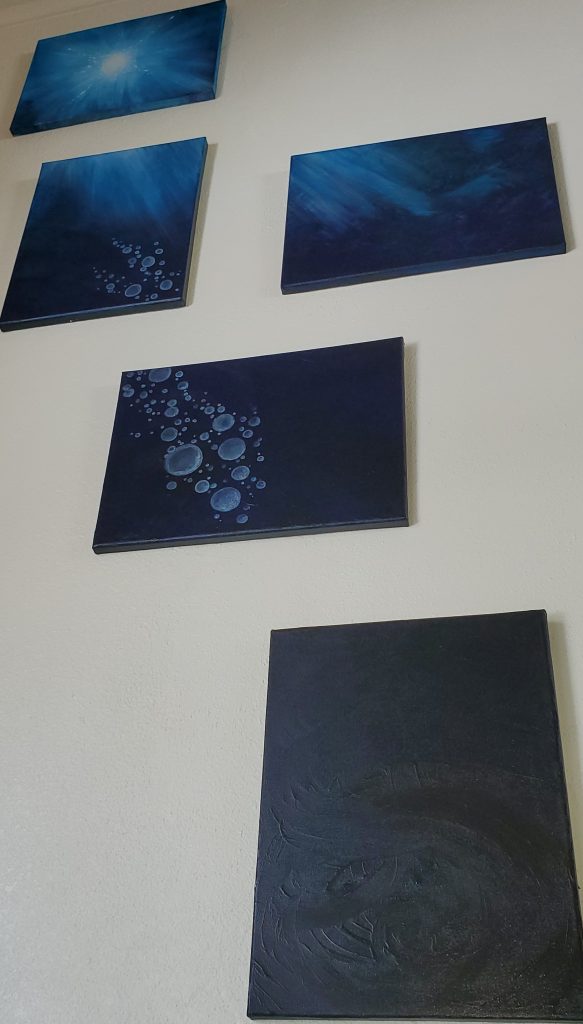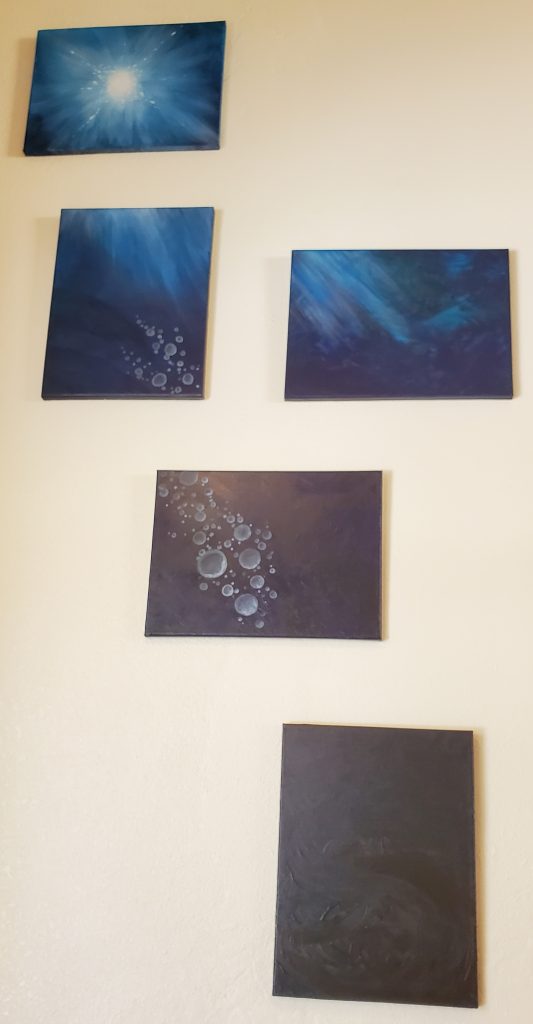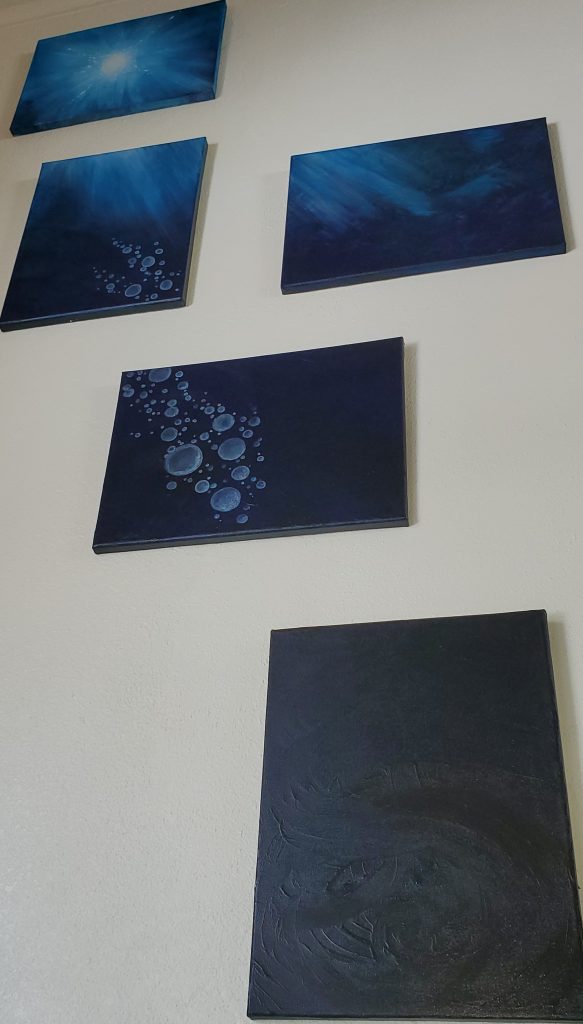
The topic of my STEAM project is how Hydrogen Cyanide gas lethally obstructs the hemoglobin in our red blood cells from picking up and transporting oxygen. Our cells and organs suffocate from lack of oxygen even though we keep breathing, this is called metabolic asphyxiation. When hydrogen cyanide is inhaled it does not damage the respiratory system itself but it stops our ability to carry oxygen with results in systemic failure and rapid death. We basically drowned on the gas, much the same as we would in deep water, thus the painting instillation I created.
There is a great deal of information about the dangers of carbon monoxide (CO) poisoning associated with fires and heating equipment. At this point most Alaskans have CO alarms in their homes right next to the smoke detector. Unfortunately, another danger to first responders such as firefighters and medics, along with victims encountering fire smoke, especially in structure fires, is hydrogen cyanide (HCN). Research indicates that HCN is 35 times more toxic than CO. This is a common and deadly threat that could affect any of us, so sharing this information is vital.
itemprop="discussionURL"One Comment


